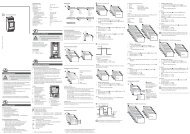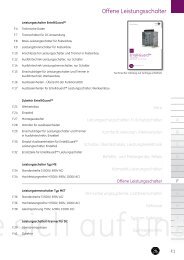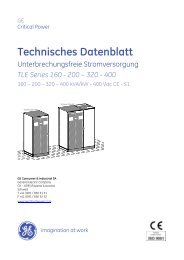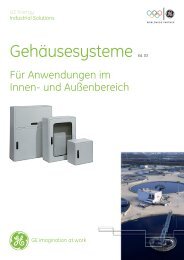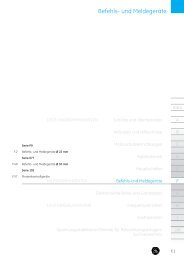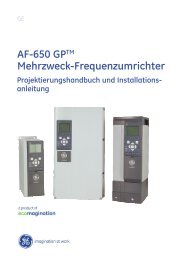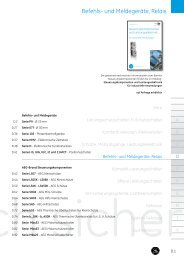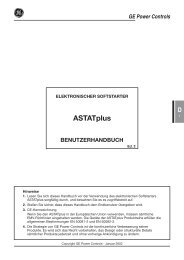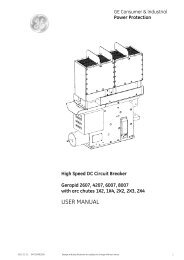High Speed DC Circuit Breaker - G E Power Controls
High Speed DC Circuit Breaker - G E Power Controls
High Speed DC Circuit Breaker - G E Power Controls
Create successful ePaper yourself
Turn your PDF publications into a flip-book with our unique Google optimized e-Paper software.
6. Inspections and maintenance<br />
6.1 List of inspections<br />
B. General functional inspection<br />
C. Inspection of the arc<br />
chute and contact system<br />
D. Inspection of the screw<br />
connections<br />
E. Inspection of the mechanic<br />
components<br />
Table 3<br />
Customer.<br />
Trained technician.<br />
Customer.<br />
Trained technician.<br />
Customer.<br />
Trained technician.<br />
GE.<br />
Service technician.<br />
TYPE OF THE INSPECTION BY WHOM HOW OFTEN WHAT TO DO/CHECK<br />
A. General visual inspection Customer.<br />
Trained technician.<br />
Every 6-12 months • Check out damages or cracks of the<br />
frame, adapter or arc chute<br />
• Check out for missing screws or caps<br />
• Check out for deglutinated labels<br />
• Check out for corrosion<br />
• Check out distinct manifestations of<br />
flame or smoke at the frame<br />
• Clean the breaker from dirt and dust<br />
• Clean and degrease the cooper terminals<br />
Every 6-12 months • Close and open manually the breaker<br />
to check the drive and mechanism<br />
• Close the breaker electrically and<br />
open by trip unit(s) releasing, to check<br />
controls<br />
Every 6-12 months<br />
OR after:<br />
• high short circuit opening<br />
at >25kA<br />
• >300 openings at load<br />
current<br />
• >100 openings at over<br />
current load (2-3 *In)<br />
Every 6-12 months<br />
OR after every inspection:<br />
• of the arc runners<br />
• of the contacts<br />
• of the arc chute<br />
Every 5 years<br />
OR<br />
After 5.000 openings<br />
• Check out wear of the arc runners;<br />
shall not exceed 30% of its cross section<br />
• Check out wear of the pre-arcing<br />
contact. It shall not exceed 2mm<br />
[0,08in].<br />
• Check out wear of the main contacts<br />
at fix and flexible side; shall not exceed<br />
1mm [0,04in] of its depth.<br />
• Check out wear of the arc chute’s<br />
plates; check out for deposits inside<br />
of arc chute, this area shall be free of<br />
deposits.<br />
• Check out wear of protective walls;<br />
shall not exceed 1mm [0,04].<br />
• Check out contacts’ tilt and gaps.<br />
Check out position of the countersunk<br />
screws in the sidewalls.<br />
Check for tight fitting or use torque tool<br />
(torque in SI and Imperial units):<br />
• M8 ~20Nm [~ 177 lbf*in]<br />
• M6 ~10Nm [~ 88 lbf*in]<br />
• M5 ~5Nm [~ 44 lbf*in]<br />
• M4 ~3Nm [~ 26 lbf*in]<br />
• Carry out inspection B<br />
• Check out settings of contacts and<br />
auxiliary switches<br />
• Check out upper dumper of the<br />
mechanism; no cracks, deformation<br />
or heavy discolouration; hard consistency;<br />
without punctures<br />
• Check out main flexband breakage;<br />
shall not exceed 30% of its cross section<br />
• Check out wear of mini flexband; shall<br />
not exceed 30% of its cross section<br />
Required tools:<br />
Cleaning tissue, pocket lamp, hand lever, hexagon wrench SW5, SW6, small and medium screwdriver.<br />
36 Design and specifications are subject to change without notice 01/2008





